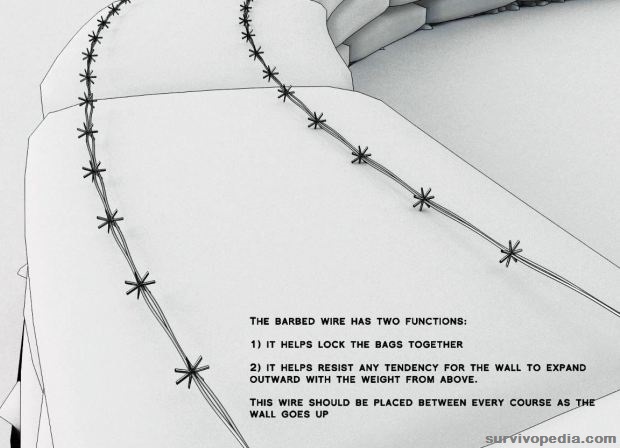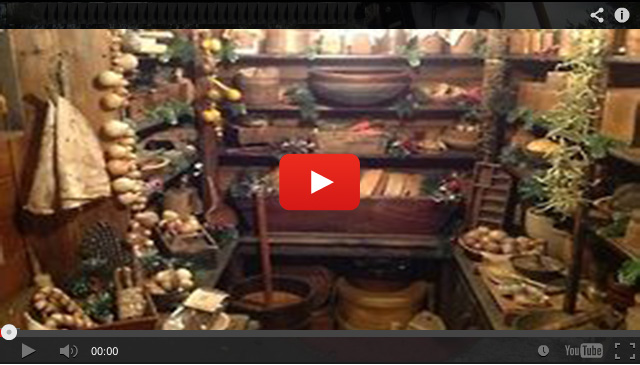When it comes to preparing for a major disaster or just surviving nowadays crisis, storing food, weapons, medicine, and other goods will be difficult in both urban in rural settings. No matter how much you may try to disguise your property, set up traps, or plan for bugging in, there is no replacement for a well hidden and well stocked survival cellar.
Individuals that currently have unfinished cellars with dirt floors or just crawl spaces under the house may be best able to make some of these modifications. Alternatively, if you cannot dig under the house safely, then you can build a cellar separate from any building and then find ways to disguise the entrance.
Choosing the Best Place for a Survival Cellar
Your survival cellar should be on high ground and as far as possible away from conduits, drains, or anything else that might cause a flood. That being said, if you are planning to live in the cellar without leaving it for weeks or months, you should try to find an area where you can easily reach an underwater stream.
Try to locate the cellar in such a way that the underground water source will not flood the cellar, yet you can still dig through and use a pipe and valve to get the water into the cellar in a controlled way. Some other places where you may be able to build something of a survival cellar include:
- Old cave systems with well hidden entrances or areas where you have to climb down to get to the cellar area.
- Old mine, bunker, well, and cistern sites where you can shore up the walls or build sideways.
- Abandoned underground subways or other areas where people are not likely to look for you or your cache.
Important Things to Do
During the process of planning and building a survival cellar, it is very important to think about what you will use the cellar for and how much room you will need for each activity. Here are some things you should incorporate into each plan:
- Make sure the structure is strong enough to build downward with disguises on each floor.
- Be able to extend the cellar underground without needing to go to the surface or use complex tools.
- Have multiple entrances and tunnels on and off your property.
- Be able to supply water and remove wastes without being detected.
- Take advantage of passive heating and cooling methods.
- Make sure there is enough room to store food, ammunition, weapons, medicine, and other survival goods.
- Leave enough room to grow food using hydroponics.
- Reserve an area for growing mushrooms, edible moss, and low light edible algae.
- Look for ways to install power generating features and lighting sufficient to grow crops and carry on daily living activities.
- Think of the cellar as your future home if it becomes impossible to bug out and bugging in becomes too dangerous.
- Choose building materials that are durable and easy to repair if needed.
- Consult with engineers and architects to make sure that your building design is sound and will remain safe in earthquakes, floods, and other situations.
Things You Should Avoid
It is very important to realize that your survival cellar may wind up being used for many functions, and may also become your home for decades under some circumstances. Lack of proper planning and building protocols now can truly wreak havoc later on when you need your cellar to be in top form. Here are some things you should avoid:
- Do not start building your survival cellar without a viable budget.
- Do not cut corners or try to use cheaper options just to save money.
- Do not do the work yourself if you are not qualified or do not have adequate resources to do the job.
- Do not believe that your current cellar is good enough just because it is in good shape or you have already started putting supplies there.
Survival Decision Point: Using Earth Bags to Build Your Cellar
If you cannot take advantage of caves or existing structures, then you will need to find some way to construct the walls of your cellar. A number of people today are taking advantage of earthbags to build cellar walls and reinforce them. Across time, military bunkers and many emergency structures have been constructed using similar earthbags.
All you will need are some strong sacks and plenty of soil or rock (not sand). Typically, you can build an earthbag cellar by layering the earthbags like bricks, and then use wire and plastic sheeting for reinforcement and dampness control.

While these materials are all inexpensive and easy to obtain, you should still discuss your plans with an architect or contractor familiar with earthbag cellar construction. In particular, you will need to know how to setup the curvature of the cellar walls and create braces within the entire layout for the roof.
Things to Keep in Your Survival Cellar
Once your survival cellar is built, you will need to start stocking it. Aside from the usual survival items such as food, water, weapons, ammo, medicines, seeds, tools, fuel, and how-to books, it is also important to store the following:
- Materials to triple the size of your cellar plus repair all of the major parts.
- Tubing, valves, and other materials to help manage sewage and water needs.
- Equipment to control air quality and provide lighting.
Building a survival cellar is very different from simply storing supplies in a pre-existing structure. In particular, you may need to live in your cellar for weeks or months as well as manage a number of emergencies that may come up during that time.
If you cannot afford to store away large quantities of food and water, building in lighting and water features combined with earthbag construction may offer you the best chance to obtain a relatively inexpensive cellar that will meet all of your survival needs.
Watch the video below:
This article has been written by Carmela Tyrell for Survivopedia.
If you found this article useful, please like our Facebook page and stay up to date with the latest articles.
Check out our survival and prepping solutions HERE
WHAT TO READ NEXT:
A RETURN TO THE OLD PATHS: HOW TO MAKE PEMMICAN LIKE THE NATIVE AMERICANS
20 LOST RECIPES FROM THE PIONEERS: WHAT THEY COOKED IN THEIR JOURNEY WESTWARD
SEVEN CLASSIC GREAT DEPRESSION ERA RECIPES GRANDMA USED TO MAKE
POTTED MEAT: A LOST SKILL OF LONG TERM MEAT STORAGE
BACK TO BASICS: HOW TO MAKE AND PRESERVE LARD
THE BEST WAY TO STOCKPILE VEGETABLES OFF-GRID
OLD FASHIONED PRESERVING-GRANDPA’S RECIPE FOR CURED SMOKED HAM
HOW TO MAKE GUNPOWDER THE OLD FASHIONED WAY
SURVIVAL HERBAL RECIPES FROM OUR ANCESTORS
OTHER USEFUL VIDEOS:
The 3 Pioneer Survival Lessons We Should Learn
The Most Effective Home Defense Strategies
Old School Hacks for Off-Grid Living
The Medical Emergency Crash Course
The Smart, Easy Way to Food Independence
How to Survive the Coming 100 Years Long Drought
Carmela Tyrrell is committed to off gridding for survival and every day life. She is currently working on combining vertical container gardening with hydroponics. Tyrrell is also exploring ways to integrate magnetic and solar power generation methods. On any given day, her husband and six cats give thanks that she has not yet blown up the house. You can send Carmela a message at editor [at] survivopedia.com.

